Ornamental motif initially in medieval miniatures, then in British and Germanic Christian architecture, the symbol of the "Green Man" is a real mystery, as although apparently born in the Christian era it undoubtedly carries 'pagan' symbolisms on the perpetual rebirth of vegetative soul of nature and of the whole cosmos.
di Obsidian Mirror
Originally posted on the Obsidian Mirror, the Author's blog
Figure of ancestral power, the Green Man it intrigues and fascinates because it seems to touch deep and unexplored chords within us. Yet not much is said about it, and when it does, the subject is dismissed quickly and often unsatisfactorily. If the origin of these friezes has been sufficiently explored, not many attempts have been made to understand the hidden meaning in the shadow of the conventional one, universally accepted as truthful. The problem is that there are no descriptions of the Green Man in literature that can help us, as there are for other types of symbols (for example in medieval bestiaries), so no interpretation can ever be indicated as absolute. Ladies and gentlemen, we are in a minefield in which any hypothesis we decide to embrace must necessarily be considered an opinion, and not an established fact.
About the Green Man I knew what everyone knows, namely that it is a pagan symbol to be interpreted as the representation of the union and respect that the pagans had for nature: Osiris, Nettuno, the titan Ocean, Artemide He is his brother Dionysus, Pan, the dryads and hamadryads nymphs and the myth of the Great Mother are only examples of man's divinization of nature. A symbol perpetuated for centuries by anonymous artists who silently opposed Christian orthodoxy in favor of more ancient faiths. A symbol that in the last century has turned into a symbol of rebirth, an archetype that indicates the awakening of nature, or spring, a meaning taken from Wiccan ceremonies and the numerous festivals dedicated to the Green Man held annually in various parts of Europe (such as that of Clun, in the Scottish region of Shropshire). For the neo-pagans it is a representation of masculine side of the divine, a symbol of strength and determination that probably refers to ancient times when these qualities were indispensable for hunting and, therefore, for survival.
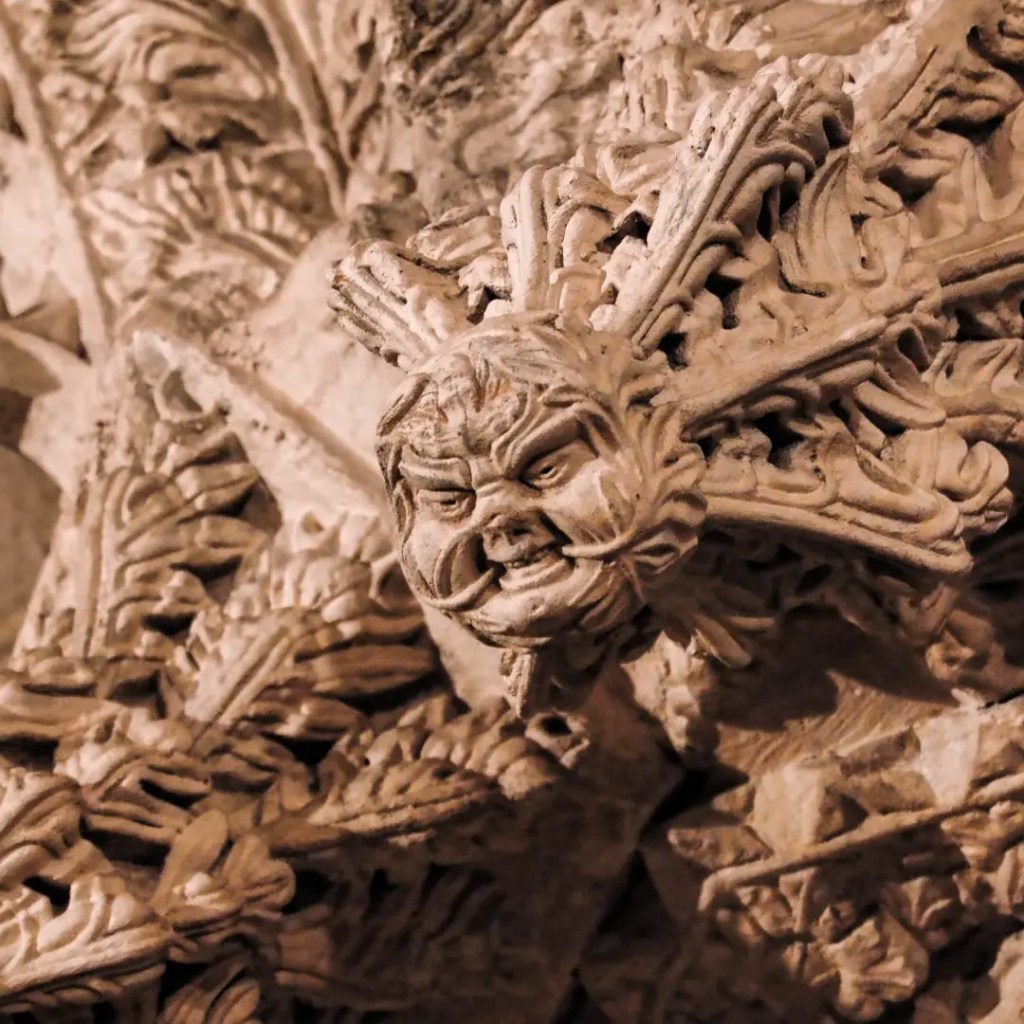
Yet this interpretation has never completely convinced me, because the history of art is full of very hermetic pagan or heterodox references, clear only to the trained and expert eye, while the nature of the Green Man (forgive me the game of words) is so evident that the fact that it was able to pass unscathed under the cleaver of censorship creates more than one perplexity for me. It seems strange to me that the apex of its diffusion could have occurred precisely in Middle Ages, one of the notoriously most intolerant periods in history.
After several searches, I can finally say that I am not the only one who thinks so. If until the 50s the classic interpretation of the Green Man has always remained uncontested, in recent decades other voices have risen from the chorus to propose a slightly different one. Among these is the idea that a series of pre-existing symbols which it was virtually impossible to eradicate was incorporated into Christian art: that is, what has been done with the Christmas, a pagan festival recycled into Christianity, albeit with a different meaning, to exploit its popularity with the masses.
Unfortunately, the topic has always aroused a very lukewarm interest from the academic world: the publications that talk about it are scarce and almost all in English, such as the short essay The Green Man di Richard Hayman which, if the topic interests you, I strongly suggest you read, or Images of Lust: Sexual carvings on medieval churches di Anthony Weir and James Jerman.
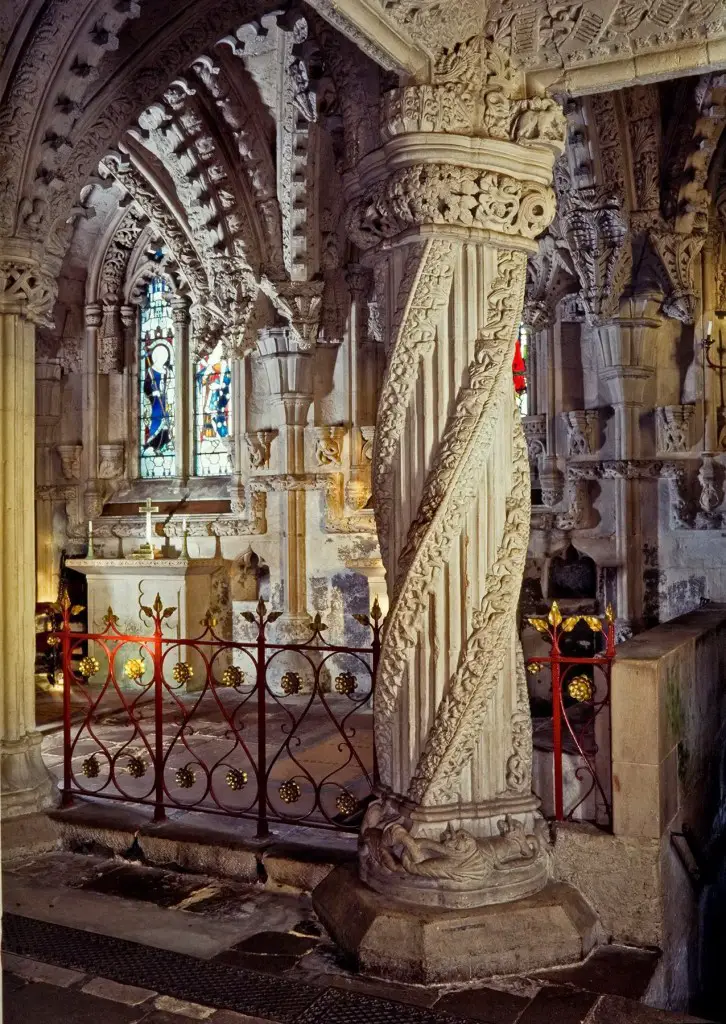
In Great Britain it seems it was not possible to find traces of the Green Man before Christianity, so it was concluded that it is a product of Christianity itself. The thesis of Hayman's book is basically this. Why else would it have been necessary to invent an image / icon (which did not exist) linked to a pre-existing religion? The question, as you can see, is by no means simple. First of all we should think about the meaning of nature in Christianity, but before doing so let's summarize more generically what we know about the friezes known as the Green Man. In the tenth century they begin to appear as illustrations on manuscripts, especially in France.
These are Bibles, books of Psalms and Ordalies, books of hours, even works by famous theologians such as the Morality of San Gregorio Magno, an exegesis of the book of Job, where they often merge with the intertwined motifs typical of Saxon and Celtic artIn fact, they recall snakes biting their tails, decorative motifs of evident stylistic practicality, and can be interpreted as the pitfalls and obstacles of earthly life. Later they appear as architectural elements in Germanic style churches. They soon spread everywhere in churches, cathedrals and abbeys, but also in other buildings, ecclesiastical and otherwise, both as architectural friezes, and in wooden furnishings (such as benches), and also in funerary art (on tombs, in short) . Their popularity increased between the eleventh and twelfth centuries.
In its simplest form it is faces, usually male, from whose orifices, eyes, nose, mouth and ears, leaves appear, often branches or vine leaves, or have leaves and shrubs instead of beards and hair; the latter seem almost male versions of the Medusa, which they resemble in a disturbing way. But there are also more abstract ones, in which vegetation predominates and human features are only hinted at, barely distinguishable: heads made of leaves that would have liked to Arcimboldo. Despite the name, these aren't always human faces: they often are demons, masks (i.e. stereotypes), even animals, preferably felines. Sometimes they have teeth and seem to bite the branches. If in some cases their association with the evil one is evident, in others they seem decorative motifs without particular meaning, more than anything else a demonstration of the taste for the absurd and bizarre typical of the Middle Ages.
The Green Man remained more or less popular until the sixteenth century, to then experience a period of oblivion and briefly return to vogue, with the neogothic, in the nineteenth century. The fact that it has practically disappeared with the decline of medieval art and iconography is precisely the more curious side of the matter. Precedents of the Green Man are found in classical antiquity and it has been hypothesized that they may be of Indian derivation but, even if they were, this would not help us to understand the meaning attributed to them in our Middle Ages. It was not possible to find direct links between these images even in different eras within the same territory; and if it is true that it is possible to transfer images between cultures that are even very different from each other, they hardly keep their original meaning.
An example above all is the swastika: the meaning attributed to it by Buddhism and Hinduism has nothing to do with the famous Nazi symbol, so much so that even today in the West it is socially unacceptable (as well as being a crime) to exhibit the swastika. We also think of how we associate with animals vices and virtues derived from Christian morality, while in other cultures they have or have had a very different meaning: for example, the owl, a symbol of wisdom, in the Middle Ages indicated ignorance on the contrary.
In Vecchio e New Testament nature is often associated with supernatural events. In the Garden of Eden are the Tree of Life and that of Good and Evil; when God chooses to reveal himself to Moses, he appears to him in a burning bush, which is not consumed (Exodus 3, 2); Christ indicates an analogy between himself and the vine (John 15, 1) and between his disciples and the vine branches (John 15, 5); palm branches are used to welcome Jesus as he enters Jerusalem; etc. etc.
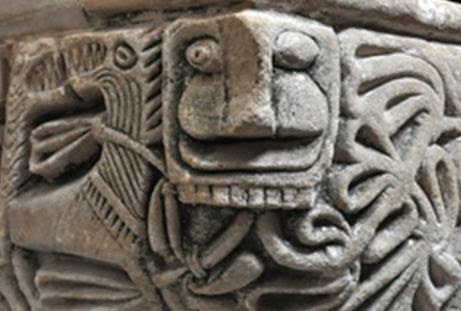
In Christianity the and gentle cosmetics it is seen as part of God's plan and therefore as a moral entity. In the Middle Ages it was described as pervaded by opposing forces of a double nature, positive and negative; even Dante contrasts the "dark forest" of Hell with the "divine forest" of Paradise. This should not be surprising, if you consider that at the time the territories were not very urbanized and, when one set out on a journey, it was necessary to cross woods and forests populated by ferocious beasts and a refuge for the marginalized of society (brigands, outcasts, plague victims and so on): real dangers that, in the collective imagination, converged in the tales of the woods as the place of choice for pagans and witches (who held their ceremonies, orgies and human sacrifices there) and in fairy tales.
On the other hand, pastoralism and agriculture were essential for the livelihood of the population and the peasant culture was pervaded by cults linked to nature. Therefore, in general, if allegories related to the woods as places of peace, paradisiacs were frequent, so were those who saw them as places of temptation: in the darkness of the wood the devil tried to divert the faithful from the path of righteousness. He was born there metaphor of the forest as an initiatory place, celebrated by a literature of undeniable charm such as, for example, the Breton cycles and the saga of the Nibelungs, but also the history of Robin Hood, a figure that among other things can be traced back to that of the Green Man. Jack-in-the-green, Santa Claus, Peter Pan and Khidr, mythical figure of Islam are other figures that have been associated with that of the Green Man.

In the late Middle Ages, with the birth of religious communities such as that of the Franciscans and Cistercians, the forest became for the West what the desert is for the East, a place that allowed the birth of a new type of spirituality. In medieval art, however, a dark view of nature often prevails and even the Green Man may have been used to symbolize various meanings that somehow have to do with sin, albeit with less impact than dragons. and other mythological creatures with well-coded moral connotations: lust and sins of the flesh, man's mortality, hesitation in following the right path, the struggle between good and evil.
The origins of the Green Man are certainly attributable to the pre-Christian era, however, there is no evidence that it was somehow specifically codified or revered in ancient Europe and its tradition established itself within Christianity, so according to another thesis, we should rather consider it a archetype in the Platonic and Jungian sense, an image present in our collective unconscious that continues to reappear when humanity feels the need to reaffirm its union with nature. Never as before, a topical image. Whatever he actually represents, the Green Man will always remain my personal obsession. And, as they had prophesied to me, after having been to rosslyn, with its over one hundred depictions of the Green Man, they are no longer the same. Those hundred-and-one pairs of eyes are still following me and, I'm afraid, always will.

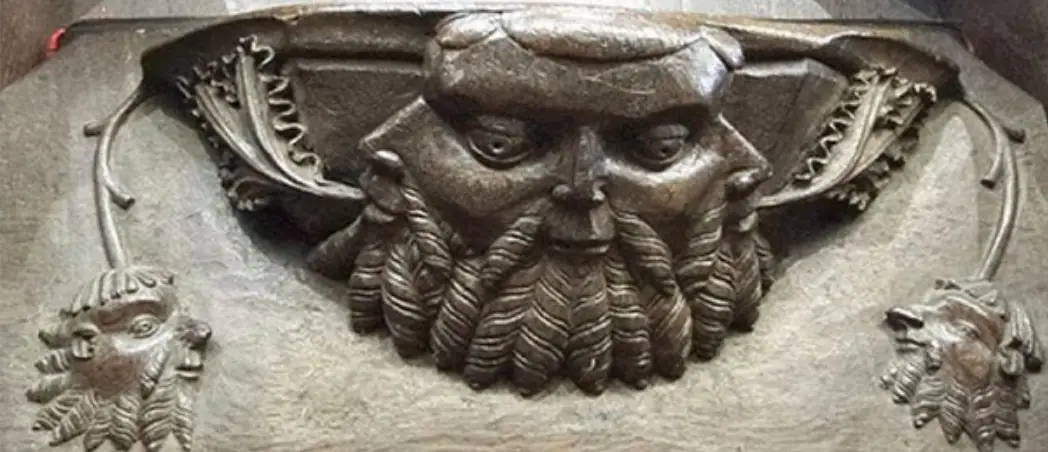
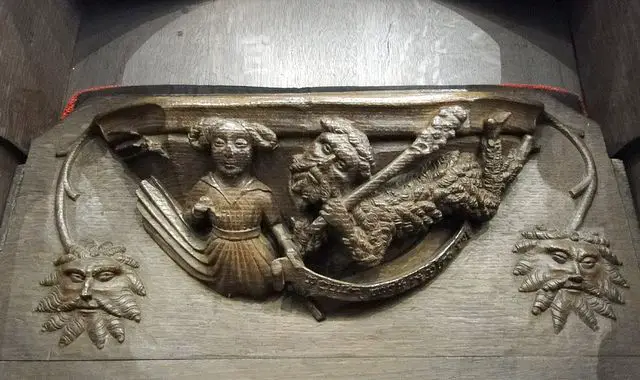
2 comments on “The true nature of the Green Man"